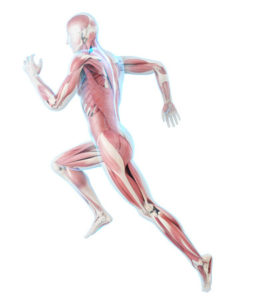The Anatomy of a Sports Hernia

Did you know that athletes can get a specific type of hernia that’s different than a regular hernia? It’s called athletic pubalgia, or more commonly, a “sports hernia.” This type of hernia gets its name from the fact that it develops from the movements athletes perform to play sports: the repetitive turning, twisting, and fast movements that come with tennis, running, basketball, wrestling, football, hockey, and soccer. Although sports hernias are associated more with professional players, they can also develop in anyone who is physically active in sports.
A sports hernia occurs when a tendon, a muscle or a ligament in the lower abdomen or groin tears. Although having more developed core muscles helps, even players in absolute great shape can develop a sports hernia.
Because a sports hernia doesn’t create a bulge under the skin like a regular hernia does—and in fact doesn’t have a definitive mark at all—it can be difficult to diagnose. In fact, many doctors don’t accept a sports hernia as being a real condition, though this mindset is changing. Many athletes think they have a simple muscle strain or tear, and so they don’t immediately seek treatment. As a result, the pain returns and effects their performance when they play.
The true symptom of a sports hernia is the persistent pain that just keeps coming back. This pain is in the lower abdomen, groin, thigh, or for men, the testicles. This pain intensifies when playing, and can also be felt while lifting something or during a cough, laugh or sneeze. It may go away after the athlete takes it easy for a while, but it always returns. This is the mark of a sports hernia.
When a doctor suspects that an athlete is suffering from a sports hernia, an MRI scan, a CT scan, or ultrasound is usually performed to locate any tears. However, most of the time and with the right physician, a sports hernia diagnosis can be made with just the athlete’s history and physical examination.
Every athlete’s body is different and heals in its own way. It’s extremely important to seek treatment immediately once it’s determined that you have a sports hernia. Your doctor can discuss with you on how to prevent the injury from becoming worse and the best course of treatment.
Dr. William Brown is a sports hernia specialist in Fremont, California. If you’re concerned you may have a sports hernia, contact him immediately. His diagnosis, surgery, and treatment will help get your body back where you want it to be.
